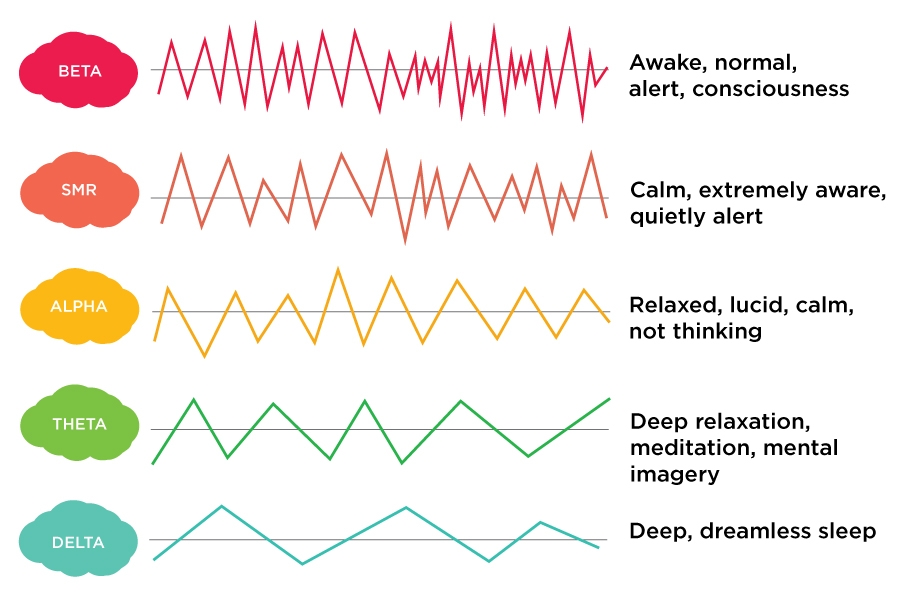What are the different brain patterns that Narbis is measuring?
This is Your Brain on Hyperfocus
Science is better understanding how brainwaves — specifically the suppression of certain brainwaves over others — leads to hyperfocus. In a recent study published in Experimental Brain Research, scientists examined changes in brain rhythms in relation to optimal performance in self-paced sports. They discovered that peak performance in elite athletes is characterized by increased alpha waves and theta waves across the cortex and that during optimal performance, the frontal lobe is more relaxed — corresponding to higher alpha waves — and less busy (lower theta waves) compared to the other brain lobes.
Moreover, for the same given task, experts’ brains are more relaxed (higher alpha) and less busy (lower theta) than the brains of novices. Their findings suggest that neurofeedback training could teach athletes how to amplify and suppress their alpha and theta activity across the brain during all movement stages.
Hyperfocus and Brainwaves

What are brainwaves and how are they correlated to hyperfocus? First off, electrical activity emanating from the brain is displayed in the form of brainwaves.
There are four main categories of these brainwaves, ranging from the most activity to the least activity. A wonderful summary of how it all works from Scientific American follows:
When we go to bed and read for a few minutes before attempting sleep, we are likely to be in low beta. When we put the book down, turn off the lights and close our eyes, our brainwaves will descend from beta, to alpha, to theta and finally, when we fall asleep, to delta.
Related Articles
Narbis App Update
README – Narbis App Update (v84) Dear Narbis User, Here are the instructions to update the Narbis app on your tablet. You can also watch a short video walkthrough of the entire update process on the tablet screen here: ? ...Why are there three different settings (focus, calm focus, performance) and what do they mean? What’s the difference among them, and how do you know on which setting to practice?
All of the Narbis training programs are based on the NASA “engagement index,” which was originally used to monitor the attention of pilots in the cockpit. Most people interested in practicing attention will use the focus program. The Narbis focus ...How long should I use Narbis for? (weeks? Months? lifetime?)
Most people will complete a typical neurofeedback training program within 40-60, 30 to 45 minute training sessions. Many of the people included in the Narbis Clinical Pilots dating back to 2015 used Narbis 4 to 5 times a week for 30 minutes for about ...Is there a limit on how long I should use Narbis?
Most people find that after 40 to 60 trainings, they have reached their “peak” or feel they have plateaued and do not need to continue using neurofeedback regularly after that point. It is not recommended to use Narbis for longer than 60 minutes a ...What training programs are available?
Narbis Training Programs Overview All Narbis training programs are based on the NASA “engagement index,” a system originally developed to monitor pilots' attention levels in the cockpit. The programs are designed to provide real-time feedback based ...